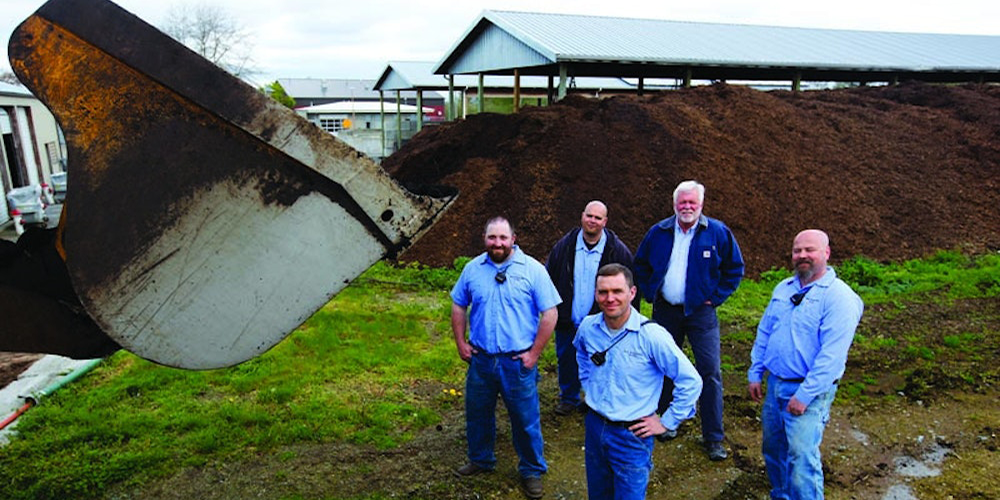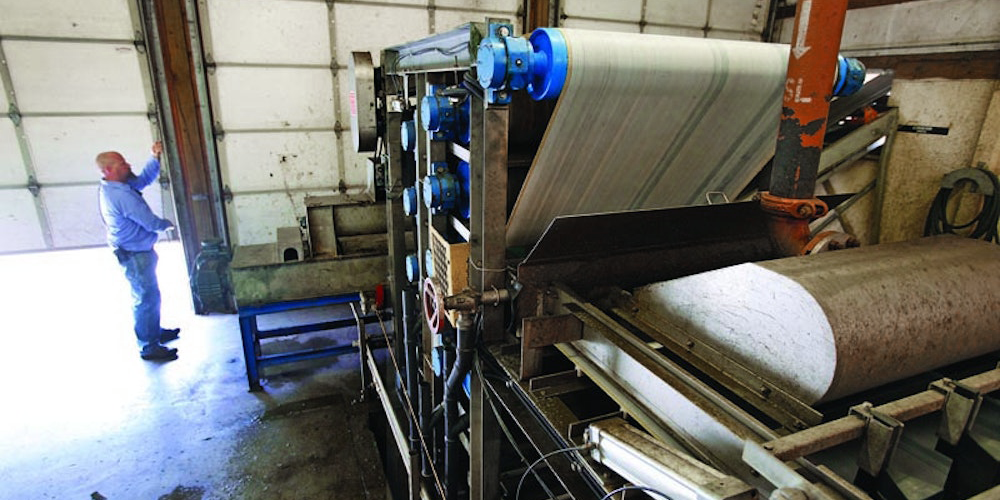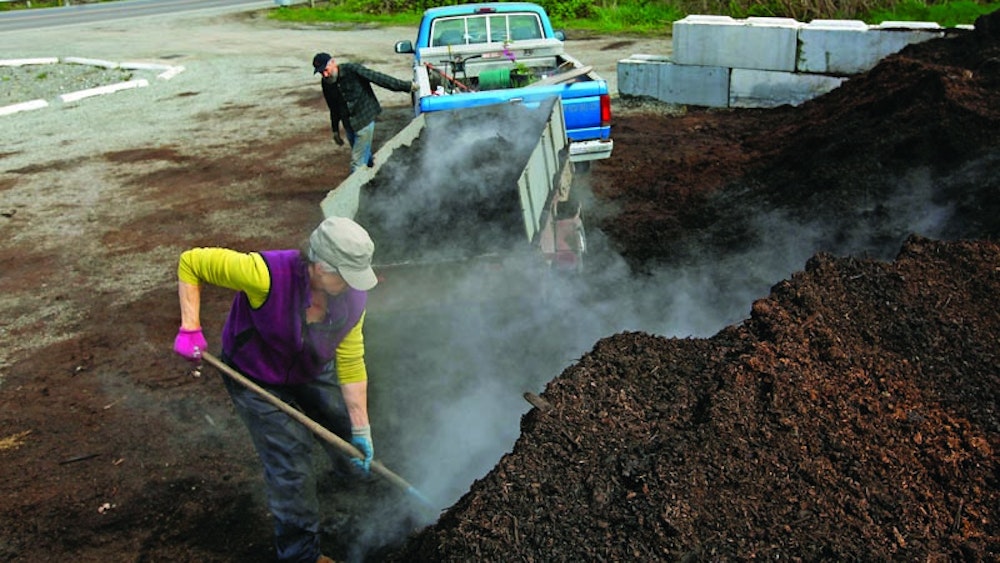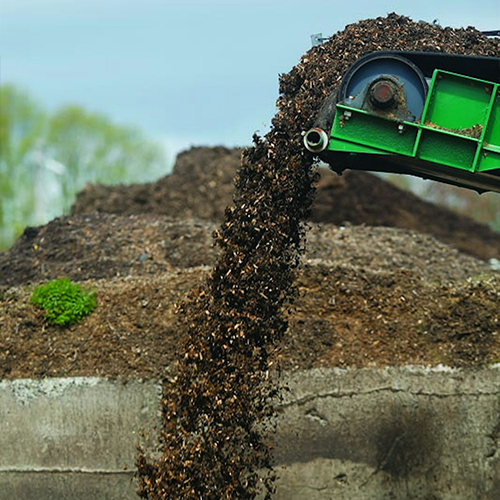Small-Town Treatment Plant Uses Biosolids to Create a High-Demand Product
Nearly 20 years ago the tiny town of La Conner faced a biosolids dilemma. Located in Washington’s Skagit Valley, about 70 miles north of Seattle, the town had relied on farmland application, but that was becoming more difficult.
One option would have been to assume the cost of sending Class B biosolids five hours away to eastern Washington for use on farmland there, but town leaders wanted to try a different approach. “We thought, we’re surrounded by farmland — we can turn this material into a resource,” says Kelly Wynn, who manages From Plan B To Class A: The La Conner Wastewater Treatment Plant Uses Biosolids To Create A High-Demand Product
That resource is compost. The town now combines its biosolids with yard waste and wood chips, composts the mixture for up to a year, and offers it free to local residents and for sale to large-scale users. The program has been growing steadily, and in 2012, the Northwest Biosolids Management Association, representing 14 municipalities and clean-water districts, recognized La Conner with its Excellence in Biosolids Management Award.

The La Conner wastewater facility team includes, clockwise, from front, MacLeod Pappidas and Jake Hamlin, operators; Ryan Erickson, compost operator; Kelly Wynn, plant manager; and Ed Matheson, lead operator.
Land application faces limits
Wynn has managed La Conner’s wastewater treatment for 34 years through his business, Water & Wastewater Services (W&WS). His company specializes in managing rural utilities with 3,000 or fewer customers. Clients are scattered over seven counties; about 30 are wastewater operations, including La Conner, and more than 100 are water utilities.
The La Conner treatment facility serves the town itself, a rural community of about 800 people, as well as the nearby Swinomish Indian Tribal Community and Skagit County Sewer District No. 1, bringing its total customer base to 1,600. For the first 15 years or so after W&WS took over the facility in 1980, the plant’s Class B biosolids were directly land-applied. As the region’s population grew, however, the role of farming began to diminish.
The Skagit Valley, still farming country, is famous for tulips and is also a source of seed crops. But agriculture is “not nearly as predominant as it was 10 or 15 years ago,” says Wynn.
Then La Conner’s treatment plant, which had been operating below capacity, began treating waste from boats of the Washington state ferry system. That meant extra revenue for the town but also more biosolids, even as application site permits were getting more difficult to obtain.
“There was more and more permitting and bureaucracy involved,” Wynn says.
In the early 1990s, La Conner decided to expand the treatment plant to serve as a central site for treating septic tank waste from throughout the Skagit Valley, where haulers were also running out of options. Other utilities in the region chose to dewater their biosolids, then truck the material over the Cascade Mountains to eastern Washington for application to wheat fields. But La Conner officials felt the biosolids still had a viable use right at home.
And so La Conner turned to composting. “It all came together in about 1994,” says Wynn. “It’s been constantly growing since then.” The town collects yard waste from residents for $10 for 10 32-gallon cans, or $40 for 10 cubic yards, and also buys wood chips from lumber mills.
Trio of streams
The La Conner treatment plant is designed for 0.52 mgd. Both the treatment plant and the composting facilities were upgraded in 2000, about six years after the composting program started. Overall, the plant has doubled in size since it was built 40 years ago.
The plant receives wastewater through its collection system, septage delivered by haulers, and biosolids trucked in from other wastewater treatment plants, some operated by Wynn’s company. The wastewater is treated in an extended aeration activated sludge process. Final effluent is UV disinfected and discharged to the Swinomish Slough.
Influent is screened, sent to one of two oxidation ditches, and then delivered to one of two clarifiers. Biosolids from the clarifiers are sent to two aerated holding tanks (25,000 and 80,000 gallons) in series. The material is held in the first tank and aerated, then transferred to the second tank and aerated again. Contents from that tank are sent to a Roediger Model TP12.43 S-belt filter press (Charter Machine Company). Filtrate from the press returns to the headworks.

TP12.43; 1.2M 2-Belt Tower Press from Charter Machine Company
The biosolids cake is stored in a bin until an agricultural mixer blends it at a ratio of one part biosolids to two parts wood chips and yard waste. The mixture is then off-loaded into storage bays in piles 15 feet deep and 10 feet wide.
Static pile aeration
“We use static pile aeration,” says Wynn. Air is drawn from the blowers that feed the holding tanks and pumped into the center of the compost piles. Internal chemical and biological reactions heat the piles to 130 degrees F for three days in a qualified process to further reduce pathogens. After that, the temperature is maintained at 104 to 113 degrees F for 14 days.
The pile is then transferred from the composting storage bay to another area where it is cured for at least 30 days. After curing, a sample is tested in the county health department’s designated outside laboratory for fecal coliform and other potentially harmful constituents. The resulting compost qualifies as Class A biosolids.
La Conner’s wastewater is typical of a residential and tourist town except that the Swinomish Fish Company, owned and operated by the Swinomish Indian Tribal Community, sends waste from processing canned salmon and other seafood products. During busy processing periods, “the waste coming into the plant turns red — it’s full of blood,” says Wynn. Screening at the plant removes bones and other large solids, but the blood enriches the biosolids, Wynn says.
The resulting compost looks a bit like shredded landscape bark. In front of the treatment plant, a garden demonstrates the benefits of using the compost. Some of the product is sold to topsoil companies and landscapers and other large-volume users. La Conner homeowners can pick up compost for free at the treatment plant.
“There’s a steady stream of septage and biosolids flowing into the plant through trucks, and a somewhat steady stream of cars and trucks leaving the facility with compost,” Wynn says. “I use it in my vegetable garden at home, and I also use it in my ornamental gardens. I just do it every year and it really helps the soil.” He has seen less weed growth and richer soil as a result.
A money-maker
Users who want large amounts of compost and need help to load it purchase a punch card for the amount they want. Plant personnel then load it into the buyer’s truck with a tractor. Compost is sold at $10 per cubic yard for up to 10 yards and $5 a yard after that. Screened compost costs $13 a yard for up to 10 yards and $9 a yard thereafter. “We generated about $30,000 last year in compost sales,” Wynn says.
Occasionally, big users such as landscape contractors skirt the system. On a Friday night, they drop off a loader at the site. “They show up with a truck on Saturday morning and scoop out the entire bin, and none of the homeowners can get anything,” Wynn says. “It’s kind of frustrating.” Because they do the loading themselves, they’re not violating any rules.
“The debate we’ve been having lately is, do we try to control that,” Wynn says. “But the spirit of the community is, this material is free.” So for now, the town chooses not to take action.
Such incidents aren’t common. Most commercial users purchase the compost and ask plant workers to load it for them.
Building on support
There is room for growth. “We take in about 60,000 gallons a day of outside waste,” says Wynn. “Right now, we process about 2,000 cubic yards of compost a month. We have enough land space to go to 5,000 cubic yards a month.”
So far, marketing has been ad hoc. The program has turned to Washington State University (WSU) and other outside advisers to help develop the market. That includes funding a Ph.D. student to study the compost and public perception (see sidebar). Wynn expects marketing to become more systematic in the future. For now, it’s all word of mouth, mainly directed at the wholesale market and the farming community.
“The state highway department here has shown wonderful results using biosolids compost on the sides of roadways and for construction landscaping projects, so we’ll look toward those kinds of partners,” Wynn says. Recently WSU, working with a local farmer, put in a request for the town to supply 25 tons of compost for a 10-acre plot that is the site of an experiment in growing beet seed.
One thing isn’t on the agenda: retailing. La Conner has decided not to bag and sell its compost in garden centers or hardware stores. “We’ve talked about it, and really we prefer to be on the wholesale end of this,” Wynn says. That will let the program stick to its original mission: enriching the local agricultural land, depleted of nutrients from more than a century of use.
“Our long-term goals are to partner with farmers and just work pieces of land,” Wynn explains. Slowly, steadily, those goals are bearing fruit — thanks to La Conner’s nutrient-rich compost.

Community members are welcome to load and haul free compost from the La Conner Wastewater Treatment Plant. The plant, operated by Water & Wastewater Services, won a 2012 Excellence in Biosolids Management Award from the Northwest Biosolids Management Association.

